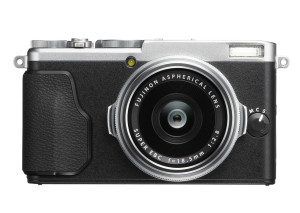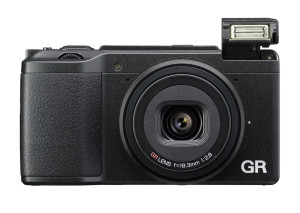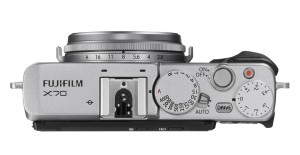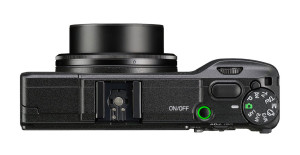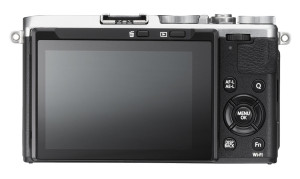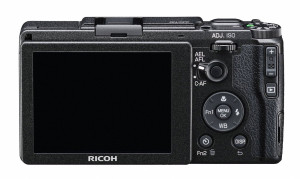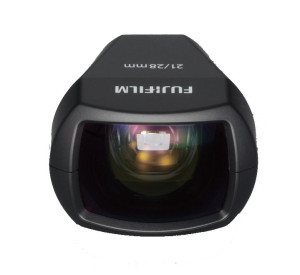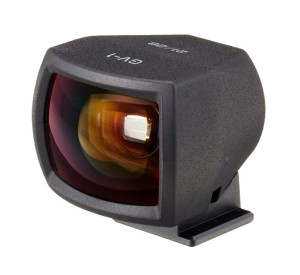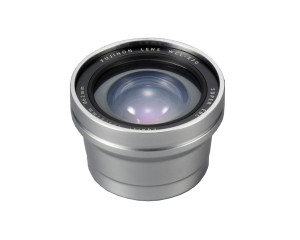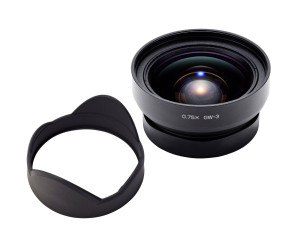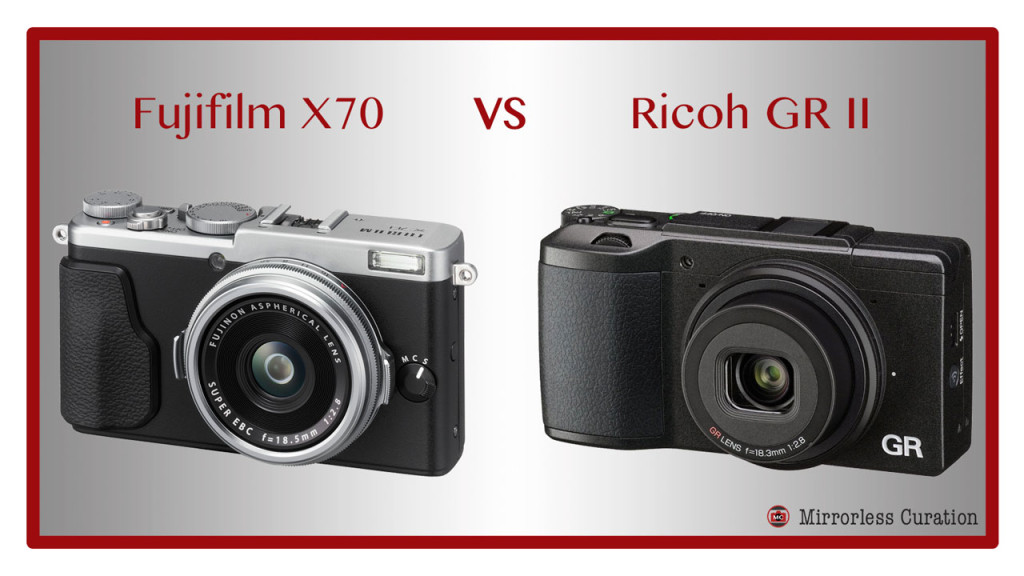
Update: our full comparison with high resolution sample images is now online at Mirrorless Comparison. You can also watch our video comparison below.
The Fujifilm X70 inaugurates a new segment in the X series but the product does not represent a new concept on the premium compact camera market. Other brands have released similar models in the past featuring a large sensor (APS-C), fixed wide angle lens (28mm equivalent) and optional optical viewfinder. The most popular among street photographers is the Ricoh GR whose origins can be traced back to 35mm film in 1996.
So let’s have a look at the characteristics of the X70 and its main competitor.
Design and Ergonomics
- X70: 112 (W) x 64 (H) x 44 (D) mm, 340g
- GR II: 117 (W) x 63 (H) x 34 (D) mm, 251g
The X70 is heavier and slightly thicker while the GR II is slightly larger. There is a distinct difference in the design of the front grip (it is more rounded on the GR II).
The X70 is available in black/silver or just black. The GR II can only be found in black.
Neither body is weather sealed. The X70 has an aluminum body type while the GR II has a magnesium alloy chassis.
Both cameras have a hot-shoe for an external flash and accessories. They also feature a built-in flash. The one found on the X70 is fixed at the front while the GR II has a pop-up type on top.
Ease of Use
Fujifilm maintains its tradition with the inclusion of exposure dials. The X70 has the shutter speed and exposure compensation dials (±3 Ev) on top, which is definitely a plus. It also features an aperture ring on the lens (like the X100 series). You will also notice an Auto lever (to switch to Auto shooting mode like on the X-T10) and Drive button.
The Ricoh GR on the other hand features the classic shooting mode dial on top. There is also a smaller dial on top of the front grip for exposure settings (shutter speed or aperture). The GR II’s range for exposure compensation is ±4 Ev. On the right side, the Ricoh camera has a button to quickly select the image Effects.
The X70 also features a multi-purpose ring on the lens that can be used for manual focus (Magnification, Peaking and Digital Split Assists available) or the Digital Teleconverter. The GR II lacks any kind of ring on the lens (what looks like a ring on the lens is actually a ring cap, you remove it to attach the wide angle converter). To focus manually you need to press the Macro button first, then use the front dial. Magnification and Focus Peaking are both available.
On the rear both cameras have a similar button layout. You will notice the AF lever on the Ricoh GR, while the X70 has a Focus selector (S, C and M) on the front on the camera. The ± zoom lever on the GR II also serves to playback the images (zoom in/out). Both cameras include a small command dial on the rear (called ISO Adj. Lever on the GR II).
The X70 offers more room for customisation. It has 8 function buttons and a Quick Menu button with 16 different options that can be customised. The Ricoh GR II has three Function buttons and the Adj. Lever can be customized. You can also save your favourite settings in three personal menus called My Settings.
- X70: 3.0-in tilting touch-sensitive LCD screen, 1040k dots
- GR II: 3.0-in fixed LCD screen, 1230k dots
The X70 is Fujifilm’s first X series camera to integrate touch capabilities. The LCD can also be tilted up 180° (selfie mode) and down 45°. The GR II LCD is fixed and lacks touch functionalities.
Both brands offer two optional optical viewfinders compatible with the field of view of their respective lenses (Fujifilm VF-X70 and Ricoh GV-1). They also cover the view for the wide angle adapter (21mm equivalent).
Image Quality
- X70: 16MP X-Trans CMOS II
- GR II: 16MP CMOS
Both cameras feature an APS-C sized sensor with the same resolution. The X70 features X-Trans II technology that offers a different colour filter array and eliminates moiré issues (no optical low pass filter required). The GR II sensor has a conventional Bayer filter but lacks the OLP filter as well.
Note: by clicking on one of the two images below, you can access our complete comparison with full res images on MirrorLessons.


- X70: ISO 200-6400, pull 100 and push 12800 to 51200 (JPG only)
- GR II: ISO 100-3200, push to 25600
Both cameras offer similar ISO specs. The X70 has 1 extra EV at the extended sensitivities but it is limited to JPG format. It offers three Auto ISO settings (up to ISO 6400). The Ricoh GR II can shoot both RAW and JPG throughout the entire ISO range. It has an Auto ISO setting but the limit is ISO 800.
If we dig inside the official specs, we will notice that the focal length is slightly different: 18.5mm for the X70 and 18.3mm for the GR II but that difference is irrelevant. Both cameras offer an angle of view of 75° which is the equivalent of a 28mm lens on 36×24 format. The fastest aperture is f/2.8 on both cameras. The lens design is also very similar (7 elements in 5 groups with 2 aspherical elements, nine-blade diaphragm). Both can focus as close as 10cm.
Both brands offer a wide-angle conversion lens (Fujifilm WCL-X70 and Ricoh GW-3) that gives a 0.75x view (21mm equivalent).
- X70: 30s to 1/4000s, up to 1/32000s (electronic shutter), Bulb
- GR II: 300s to 1/4000s, Bulb, Time
Both cameras feature a leaf shutter mechanism that offers a quiet shutter sound. It also allows for high speed sync with flash but can also limit the shutter speed with fast apertures. If you need a faster speed with the X70, you can revert to the electronic shutter (flash won’t work however). The GR II has a built-in ND filter (2 stops). It is also interesting to note that the slowest shutter speed of the GR II (excluding the Bulb mode) is 300s.
Concerning colours, the Fujifilm X70 has the popular Film Simulation modes including Classic Chrome. The GR II has the Standard and Vivid colour profiles plus two addition profiles that can be configured with the user’s favourite setting. There are also Digital Filters including different Black and White profiles that are quite popular.
Autofocus and Performance
- X70: 40 contrast and 9 phase detection points
- GR II: 9 contrast detection points
The X70 offers a more advanced autofocus system with both contrast and phase detection points. The camera includes all the AF area options found on the X-T1 and X-T10. This include the AF Zone and Wide/Tracking modes that work on a 11×7 grid (77 points). Face and Eye Detection AF are also present. In continuous shooting, the camera can reach a speed of 8fps with continuous AF (max. 10 frames in JPG).
The Ricoh GR II has a smaller AF system. The AF modes include Multi, Spot, Subject Tracking and Face recognition (the latter works only in Auto or Portrait mode). There is also a mode called Full Press Snap where the camera focuses at a fixed distance (that can be set in the menu) when the shutter release is fully pressed (useful if you want to work with zone focusing). The continuous shooting speed is 4fps but with better buffer capabilities (999 frames in JPG, 10 frames in RAW).
Video and other features
The X70 can do AE bracketing up to ±1Ev with 3 frames while the GR II features AE Bracketing up to ±2Ev with 3 frames. Both include additional bracketing options such as White Balance and Dynamic Range. The X70 also has an option for ISO and Film Simulation modes and the GR II for Effect and Contrast.
Both cameras have a multiple exposure option but the X70 also has a Panorama mode. Both cameras have an intervalometer for time-lapse shooting. The GR II also has an Interval Composite mode that takes images at a determined interval and only extracts bright areas to save the result in a single shot (available in RAW as well). It is similar to the Olympus Live Composite and can be useful for fireworks or startrail pictures.
The X70 offers a Digital Teleconverter mode with two crop options that correspond to the field of view of 35mm and 50mm (36×24 format equivalent).
Both cameras offer a Raw development option in the Playback Menu.
Wireless connectivity is present on both models and the GR II also incorporates an NFC connection. With the dedicated apps you can remotely control the cameras and transfer images (JPG) on your mobile device.
Finally both cameras can shoot in Full HD (X70 up to 60fps, GR II up to 30fps) in MOV format.
The third wheels: Ricoh GR mark I and Nikon Coolpix A
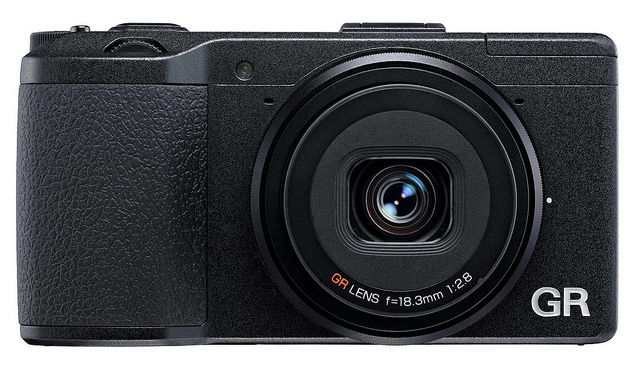
The first version of the Ricoh GR is very similar to the GR II. The sensor is the same, as well as the ISO range. Ricoh claims better high-sensitivity noise compensation with improved resolution and contrast on the GR II. Other additions to the more recent model include a new in-camera Raw processing mode called “Original ambient brightness” which produces a film-like rendering, pixel mapping, six new creative effects, and an enhanced and more accurate Auto WB. The video quality has also received firmware updates. Overall the biggest difference between the two cameras is the lack of Wi-Fi/NFC on the GR I. Long story short, the first version is worth buying if you can find it at an attractive price in comparison to the mark II.
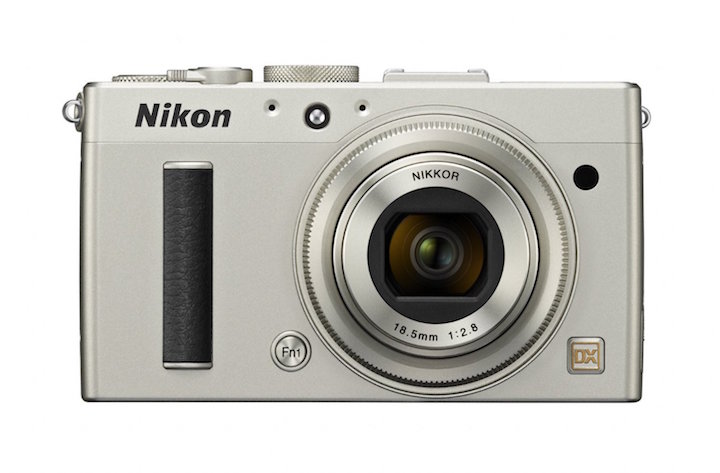
Another similar product released in 2013 is the Nikon Coolpix A. It fits into the same category because of its 16MP APS-C sensor, 28mm equivalent focal length and optional Optical Viewfinder. It is now discontinued and is worth buying only if it can be found at a significantly lower price.
You may also enjoy reading:
- 10 Fujifilm X-Pro2 reviews that are absolutely worth reading
- Olympus Pen F vs Fujifilm X-E2s – All the key differences
- Fujifilm X-Pro1 vs X-Pro2 – All the key differences
- Fujifilm X-E2 vs X-E2s – All the key differences
Conclusion
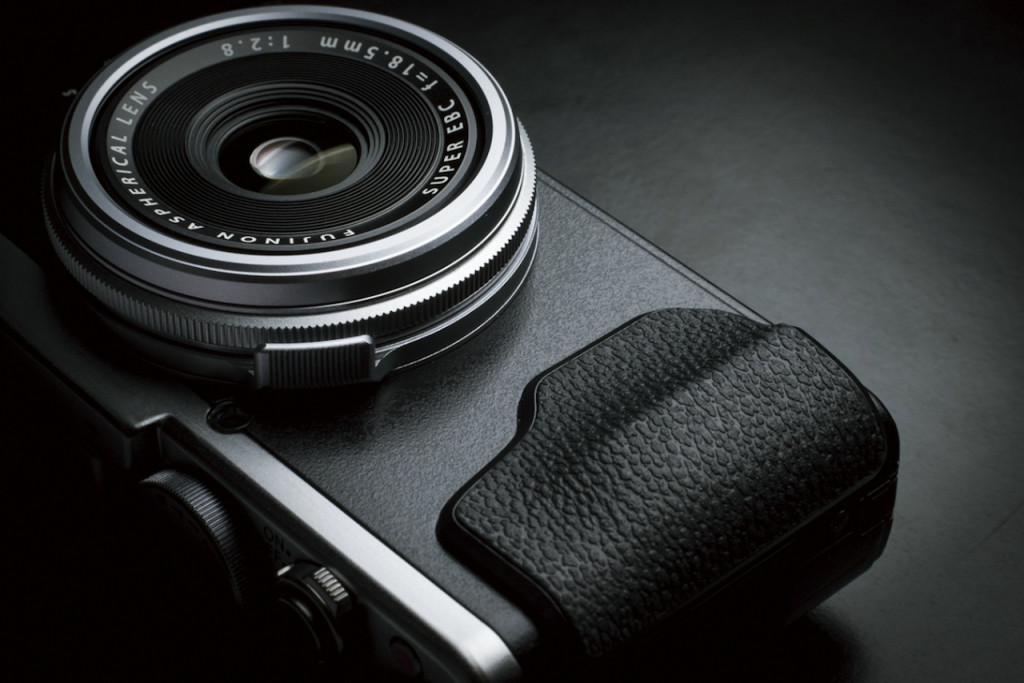
This comparison is a preview of the specs and capabilities of both cameras but of course, only a complete comparison with sample images and real world feedback will be able to determine which one really stands out.
The Fujifilm X70 definitely seems to have a better interface because of its exposure dials and rings and that can make a difference for photographers. The X70 is a new camera so we have yet to see how the new lens will compare to the Ricoh. Concerning image quality, the sensor is the same as the one inside many other X cameras so it is easier to get a clear idea about that.
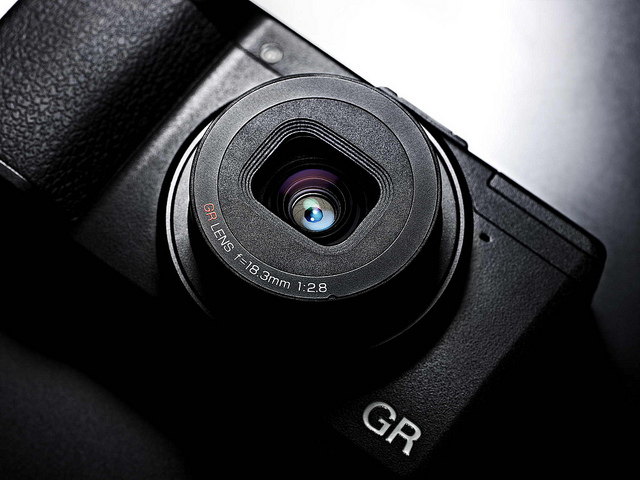
The Ricoh GR II is highly appreciated among street photographers and includes a few options designed especially for them like the Snap Focus function.
Price could also be an important factor. The X70 is currently on pre-order status with a retail price of almost $800. The GR II can be found for less than $600.
Below you can find interesting reviews of the Ricoh GR II and first impressions articles about the Fujifilm X70.

